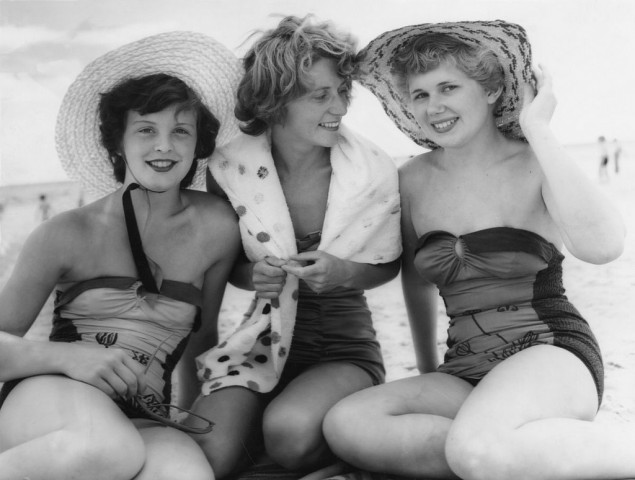Traveling in vintage style can be fun, but it also can also be a culturally sensitive minefield. Image by Pixabay user Jill111.
By now, there’s not a traveler in the Western Hemisphere who doesn’t know about the tourists who were arrested in Malaysia for posing naked on a sacred mountain. And while opinion may divide on whether or not their punishment is fitting, few disagree that what they did was a major breach of travel ethics and the ideas of culturally sensitive travel.
While most of us would like to think that we’re not that culturally insensitive while travelling, the fact is, it’s easy to inadvertently offend cultural values while travelling somewhere, and we’ve all probably done so at least once or twice, without even being aware.
As a vintage girl, it sometimes feels like there’s a whole other level of cultural sensitivity to take into account while travelling, which stems from displaying your interest in a certain period’s fashion, music, and history so overtly. Because of this, what might seem innocent can to others be offensive.
Here are several things to keep in mind regarding cultural sensitivity while traveling as a vintage girl.
Know the history of your destination.
This is something that any traveler should be aware of, but it’s especially crucial as a vintage girl. What happened in that country during the time period you’re interested in? What was that country’s experience under colonialism or imperialism? Do the people look back on certain points in history with fear, nostalgia, or a desire to forget certain things ever happened? All of this can impact how a culture may feel about ‘vintage,’ and about you wearing it.
Realize your clothes might have negative symbolism.
You might think that since most vintage clothing is more decorous than modern fashions, it would be a fail-safe option for travel. However, it’s not that simple.
In specific places, certain vintage fashions might be seen as emblems of colonialism and oppression, or have a religious affiliation. I’ve been adopted by a town as a mascot during a football game due to a vintage outfit; I’ve been perceived as an unwelcome missionary in a different country because I was wearing a knee-length skirt and a blouse.
Likewise, don’t think that vintage is considered abstract or old fashioned enough that you can get away with breaking or pushing a culture’s coverage norms — just because a skirt is full and knee-length doesn’t mean you won’t invite as much commentary as wearing a miniskirt if local custom dictates skirts should be ankle-length.

Expect extra (intrusive) attention.
Wearing vintage can make you stand out, sometimes in a good way and sometimes in a bad one. Often, I’ve been asked if my interest in the fashions of the ’40s and ’50s means I wish I’d been born then. I’ve also had people decide my political beliefs based on my clothing choices. Expect complete strangers to ask you these questions – and, occasionally, to want to take photos of you as something ‘unique’ or ‘weird’ — and expect it more often the further you are from a Westernized city, where vintage is becoming increasingly trendy.
Realize people will miss-identify with your motives.
Human history has had a lot of awful ideas and moments, and sometimes vintage seems to trigger an outpouring of support for them. Occasionally, being a vintage girl is associated by other people with thoughts and ideas you’d never expect –and they want to share them with you!
Some people might think you’re receptive to ideas or beliefs you find offensive, racist, sexist, or archaic due to how you dress. Alternatively, another country’s vintage scene might find some negative elements of the past, which you find awful, points of pride or comedy. Knowing when it’s appropriate to argue on this and when you need to let something slide is essential for making sure you don’t offend someone’s culture, even if they’re offending you.
Always remember that cultural appropriation isn’t okay just because it’s ‘historic.’
While most of us know we shouldn’t wear a Native American headdress to a festival, cultural appropriation can be a bit more insidious when it comes to vintage clothing. Throughout the early 20th century, there were ‘crazes’ for ethnic fashions in Western countries, including Chinese Cheongsam-style dresses, batik prints, and ‘ethnic’ accessories galore. However, just because it’s vintage (and very likely beautiful), doesn’t make it acceptable to wear if you’re not of that ethnicity.
Antiques aren’t always ethical souvenirs.
While there are many reasons that vintage items make great souvenirs, it’s also important to know what a country’s rules are surrounding the purchase and removal of specific historic items. Know how old counts as ‘memorabilia’ and when things count as ‘antiques,’ and be aware that just because something is 50 years old does not mean the rules around the export of natural materials (ivory, coral, etc) don’t apply! Taking a country’s historic items is an incredible breach of cultural sensitivity, and one that can land you (deservedly) in jail.
